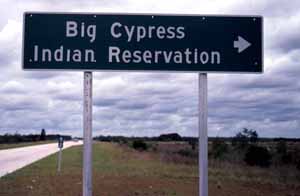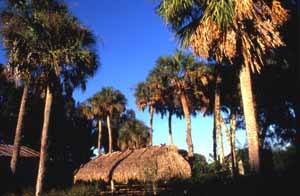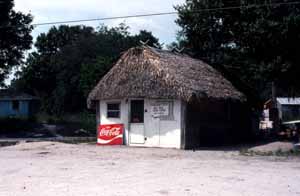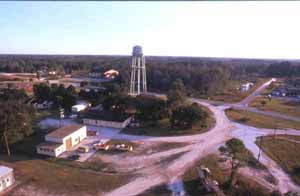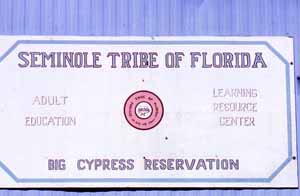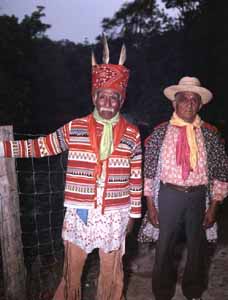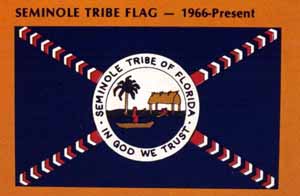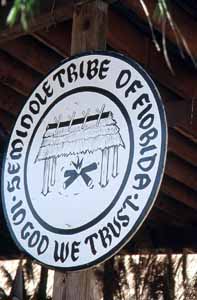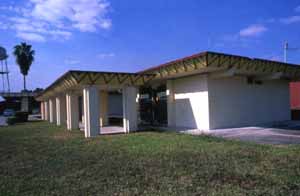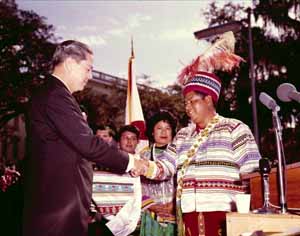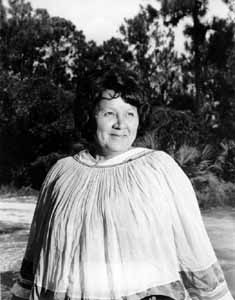Photo Exhibits
Photo exhibits spotlight various topics in Florida history, and are accompanied by brief text intended to place selected materials in historical context.
Images of Florida Seminoles in the Sunshine State
Reservations and Organization
Meanwhile, Seminoles also entered a period of RESERVATIONS AND ORGANIZATION as they organized into the Seminole Tribe of Florida and the Miccosukee Tribe of Florida. Many families also chose to move onto newly created federal reservations throughout South Florida.
Road sign for the Big Cypress Seminole Indian Reservation (c. 1970s)
Image Number: FS80216a
In 1938, the federal government, in an effort to assist Seminoles suffering from the Great Depression, created reservations at Big Cypress, Brighton, and Hollywood. In the following years, other reservations such as Tampa, Immokalee, and Fort Pierce would follow. Although not all would move onto the reservations, many did and today these sites continue to promote and preserve Seminole culture.
Chickee on the Brighton Seminole Indian Reservation (1989)
Image Number: FS89163
Chickee snack building: Big Cypress Seminole Indian Reservation (c. 1970s)
Image Number: FS80240a
Aerial view of Big Cypress Seminole Indian Reservation (1989)
Image Number: FS89293
Adult Education Center: Big Cypress Seminole Indian Reservation (1989)
Image Number: FS89362
Brighton Seminole Indian Reservation elders Billy Bowlegs III (Left) and Naw Haw Tiger (right) (c.1960s)
Image Number: FT0090
Seminole Indian Tribe of Florida flag (c. 1966)
Image Number: RC24215
In 1934, the U.S. Congress passed the Indian Reorganization Act, which allowed Native American groups to organize politically, elect leaders, and create tribal constitutions. In 1957, several Seminoles created a constitution and established a tribal Council and a Board of Directors. That same year, the U.S. Congress recognized the Seminole Indian Tribe of Florida. But not all Seminole peoples chose to join the tribe, and some formed the Miccosukkee Tribe of Florida in 1962. Still other opted out of either tribe and called themselves "independent" Seminoles.
Seal of the Seminole Tribe of Florida: Hollywood Seminole Indian Reservation, Florida (1988)
Image Number: FA3191
Tribal government offices: Brighton Seminole Indian Reservation, Florida (1989)
Image Number: FS89174
Title: Seminole Tribe of Florida Chairman Billy Osceola presenting Governor Haydon Burns with patchwork jacket at Burn's gubernatorial inauguration: Tallahassee, Florida (1965)
Image Number: GV036047
Billy Osceola was the first elected chairman of the Board of Directors for the Seminole Indian Tribe of Florida.
Betty Mae Jumper, chairwoman of the Seminole Indian tribe of Florida (1967)
Image Number: C671293
Jumper was the first female chairperson of the Seminole Tribe of Florida, first elected in 1967.
She was born in Indiantown in 1923 and attended the Cherokee Indian School in North Carolina. In 1949, she was also the first Seminole to earn a high school diploma. In later years, she became more known for her storytelling and writing.

 Listen: The Blues Program
Listen: The Blues Program